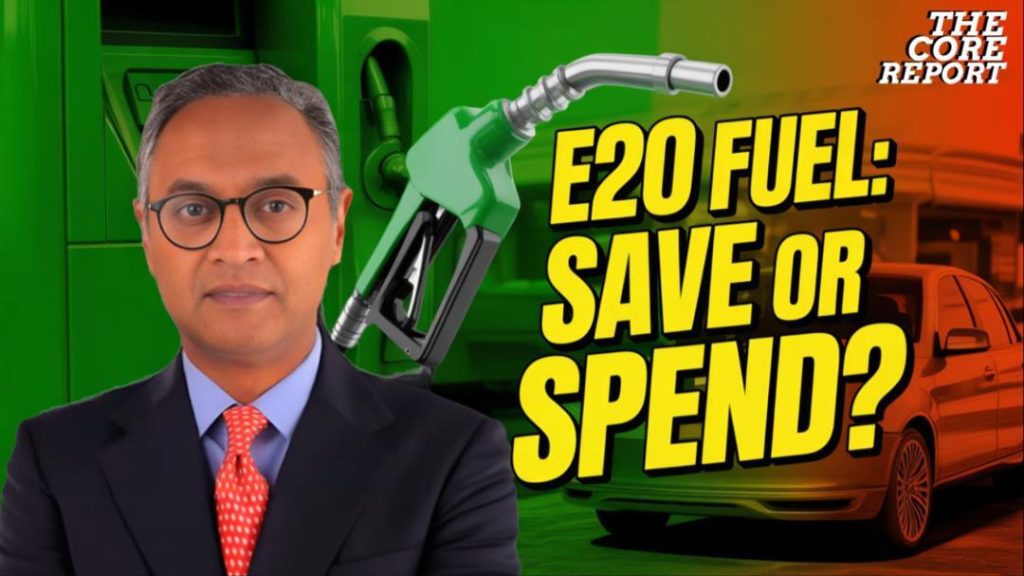
E20 Fuel in India: Benefits, Risks & What Vehicle Owners Must Know
India’s ambitious plan to reduce carbon emissions, boost energy security, and support farmers has led to the introduction of E20 petrol blend, a 20% ethanol-based fuel. The move is expected to have a significant impact on the country’s environment and economy. In this blog post, we’ll delve into the benefits and risks of E20 fuel, what vehicle owners must know, and what the future holds for this innovative fuel blend.
Benefits of E20 Fuel
The Indian government’s decision to introduce E20 fuel is driven by several benefits, including:
- Reduced Carbon Emissions: E20 fuel emits 20% less carbon dioxide (CO2) compared to regular petrol, making it a more environmentally friendly option.
- Boost to Energy Security: E20 fuel is produced from ethanol, a biofuel that can be sourced from various organic materials such as sugarcane, corn, and wheat. This reduces India’s dependence on fossil fuels and enhances energy security.
- Support to Farmers: The ethanol used in E20 fuel is sourced from farmers, providing them with a new revenue stream and supporting rural development.
- Improved Engine Performance: Studies by the Indian government have reported improved acceleration and smoother engine performance with E20 fuel.
Risks of E20 Fuel
While E20 fuel offers several benefits, there are also some risks that vehicle owners must be aware of:
- Older Vehicles Not Designed for E20: Vehicles manufactured before the introduction of E20 fuel may not be designed to handle the blend, which can lead to engine wear, fuel system corrosion, and mileage loss.
- Increased Maintenance Costs: Older vehicles may require more frequent maintenance and repairs due to the introduction of E20 fuel, which can increase maintenance costs.
- Fuel Pump and Fuel Line Issues: E20 fuel’s higher ethanol content can cause fuel pumps and fuel lines to corrode, leading to costly repairs.
- Potential for Fuel Contamination: The introduction of E20 fuel may lead to contamination of existing fuel infrastructure, which can affect the quality of fuel and impact vehicle performance.
What Vehicle Owners Must Know
To ensure a smooth transition to E20 fuel, vehicle owners must take the following steps:
- Check Vehicle Eligibility: Verify if your vehicle is compatible with E20 fuel by checking the manufacturer’s specifications or consulting with a mechanic.
- Update Fuel System: If your vehicle is not designed for E20 fuel, consult with a mechanic to update the fuel system to ensure compatibility.
- Monitor Vehicle Performance: Keep an eye on your vehicle’s performance and report any issues to the manufacturer or a mechanic.
- Maintain Vehicle Regularly: Regular maintenance is crucial to ensure that your vehicle runs smoothly and efficiently on E20 fuel.
Future of E20 Fuel in India
By 2025, all new vehicles sold in India will be E20-compliant, easing concerns about adaptation and ensuring that the transition to E20 fuel is seamless. The government has also announced plans to increase the blend ratio of ethanol in petrol to 25% by 2023-24, further reducing India’s dependence on fossil fuels and carbon emissions.
Conclusion
The introduction of E20 fuel in India is a significant step towards reducing carbon emissions, boosting energy security, and supporting farmers. While there are risks associated with the transition, vehicle owners can take steps to ensure a smooth adaptation to the new fuel blend. By 2025, all new vehicles will be E20-compliant, making it easier for vehicle owners to transition to this innovative fuel blend.
Source: https://youtu.be/zM_EyWPyliQ






